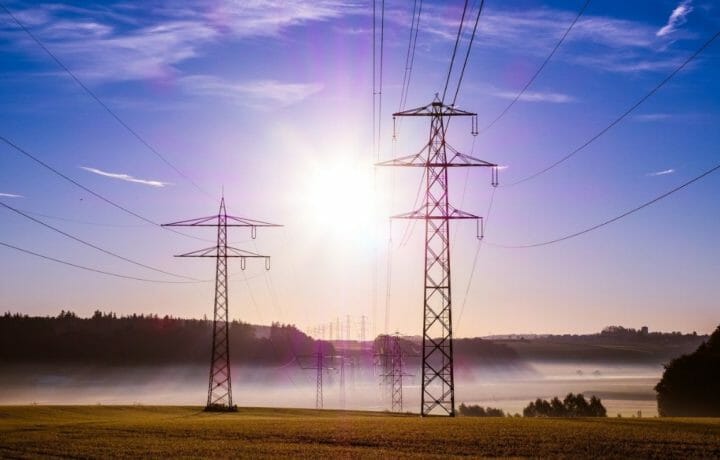The United States Department of Energy (DOE) has announced a number of investments this month, including $33 million that will go towards supporting 14 clean-energy research projects as part of a program to ensure that its research funding is reaching pockets of the country that traditionally have received disproportionally low amounts of Federal scientific funding.
In addition, the DOE has announced that it will commit $30 million to new awards and funding opportunities for energy storage solutions, as the U.S. looks to dramatically reduce the cost of energy storage systems.
Advancing Energy Research Across America
The DOE said it will support the more than a dozen projects that cover a range of topics, including grid integration, renewable solar and wind energy, and advanced manufacturing. The funding is meant to help ensure all regions of the country share in the ownership of priority research that advances science and addresses energy and environmental issues.
“America’s next big energy breakthrough can come from anywhere in the nation, and that’s why Federal R&D investments should reach and benefit all parts of the country,” said U.S. Secretary of Energy Jennifer M. Granholm via a statement. “The funding we’re announcing today will spur innovation and create energy jobs around the nation.”
This funding is being provided through the agency’s Established Program to Stimulate Competitive Research (EPSCoR) program, and it is intended to improve the geographic distribution of Federal research and development funds and strengthen research capabilities in underserved regions of the country. There are 28 jurisdictions designated under EPSCoR, including 25 states and three U.S. territories.
Powering the Future
According to the announcement, the projects selected will cover a range of energy research topics, from fundamental science topics to efforts in fusion energy, climate and ecosystem modeling, grid integration, wind energy, and sensors for energy conversion.
The programs will be spearheaded by major universities including Boise State University, the University of Alaska Fairbanks, the University of Kentucky, the University of Maine, the University of New Hampshire, and the University of New Mexico among others. The focus will range from designing dye components that could be used for quantum computing to determining how to modernize the power grid to fully accommodate renewable energy sources to developing new magnetic and superconducting materials for potential applications in energy storage and conversion, data storage, and medical imaging.
The projects were chosen based on competitive peer review under a DOE Funding Opportunity Announcement for EPSCoR Implementation Grants and will be managed by the Department’s Office of Science through its Office of Basic Energy Sciences (BES). Projects announced this month are also selections for the negotiation of financial awards.
Energy Storage Grand Challenge
The DOE’s Office of Electricity (OE) further said it would provide more than $30 million in awards and funding opportunities at the Energy Storage Grand Challenge (ESGC) Summit in Atlanta. The opportunities will include two $15 million Funding Opportunity Announcements (FOAs) for energy storage innovations.
One is related to long-duration energy storage technology reliability while the other is address and to solve issues involving pre-competitive energy storage R&D barriers. The office further announced its selection of Pacific Northwest National Laboratory (PNNL) and Argonne National Laboratory (ANL) as lab coordinators for the ESGC initiative for the next two years.
“These funding opportunities will ‘supercharge’ the future of energy storage and enable cost-effective solutions for all Americans’ electricity needs,” said Gene Rodrigues, assistant secretary for Electricity at the DOE. “This is the culmination of extensive stakeholder outreach over the past year, as well as the hard work of our Energy Storage Division which is on the forefront of spurring the development of the most advanced long-duration storage available.”
Launched in December 2020, the ESGC has aimed to reduce the levelized cost of storage for long-duration energy storage (LDES) systems that can provide energy for at least ten hours by 90% between 2020 and 2030, which will drive the price of storing energy to just US$0.05/kWh, Energy Storage News reported.
Acceleration of Next-Generation Energy Storage
The ESGC initiative is meant to help accelerate the development, commercialization, and usage of next-generation energy storage technologies and also to sustain American global leadership in energy storage. The comprehensive set of solutions could require concerted action, guided by an aggressive goal, which the DOE stated was to develop and domestically manufacture energy storage technologies that can meet all U.S. market demands by 2030.
In the medium term, this will include $15 million in funding to highlight how new long-duration storage technologies will work reliably in the field. Moreover, the opportunity is meant to feed into OE’s Rapid Operational Validation Initiative, which could validate the reliability of new technologies faster than real-time and further help new energy storage companies get their innovations to market faster.
For the long-term, an additional $15 million in funding will be provided to jump-start a new domestic energy storage industry that will serve to tackle key R&D barriers. According to the OE, this opportunity will also build on Storage Innovations 2030, which was first announced at the 2022 ESGC Summit and included extensive stakeholder interviews and open listening sessions on the storage industry’s R&D needs, as well as a series of Technology Strategy Assessments which were released this month.
These combined investments cast a spotlight on how the DOE is looking at ways of developing clean energy as well as energy storage.




